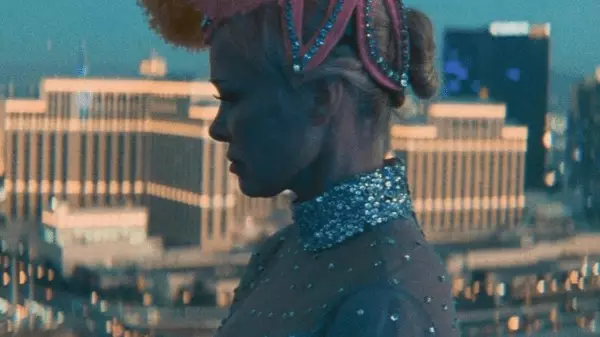In a striking return to the cinematic landscape, Pamela Anderson is stepping into the limelight once again with “The Last Showgirl,” directed by Gia Coppola. Set to hit theaters on December 13, this film serves as a compelling reflection on aging, motherhood, and the often unsung realities behind the facade of fame. Anderson, long known for her glamorous persona, portrays Shelley—a seasoned Vegas dancer grappling with the abrupt termination of her lengthy stage career. This narrative not only revitalizes Anderson’s career but also highlights the broader theme of resilience in the face of societal expectations.
Juxtaposition with Marilyn Monroe
Coppola’s creative vision is heavily influenced by notable performers from Hollywood’s golden age, particularly Marilyn Monroe. In drawing parallels between Anderson and Monroe, the director effectively elevates the narrative complexity of “The Last Showgirl.” While Monroe once captivated audiences with her beauty and vulnerability, Anderson’s character resonates with contemporary issues faced by women in the entertainment industry today. In discussing her motivations, Coppola expressed admiration for Anderson, stating, “She is the Marilyn of our time.” This comparison invokes a rich dialogue on the cyclical nature of stardom and the persistent struggles that actresses endure regardless of the era.
For Anderson, the role of Shelley is deeply personal and resonates with her own experiences. During a panel at the Toronto International Film Festival, she conveyed a sense of deep kinship with her character, stating that “this role was meant for me.” Her insights reveal an awareness of her life’s complexities, particularly the dichotomy between public perception and inner reality. Anderson’s career has often been dictated by superficial judgments, largely neglecting the depth of her artistic aspirations. Her portrayal in “The Last Showgirl” embodies a poignant exploration of a woman’s desire to be seen and valued beyond mere physicality.
Gia Coppola’s direction is marked by a sincere dedication to the craft of storytelling, paying homage to both past and present icons. Her decision to cast Anderson is not just a nod to nostalgia but a deliberate choice to engage with the theme of artistic yearning amidst life’s transitions. Coppola’s acknowledgment of Anderson’s intelligence and artistic background underscores the film’s focus on deeper emotional truths. By allowing Anderson to explore the intricacies of Shelley’s character, the narrative evolves beyond a typical Hollywood tale, instead inviting viewers to reflect on the nuances of identity, talent, and the relentless pursuit of self-expression.
The Future of Femininity in Film
As “The Last Showgirl” approaches its release, the conversations surrounding women’s representation in cinema are becoming increasingly vital. Anderson’s comeback, paired with Coppola’s progressive vision, could signify a paradigm shift that values the richness of female experiences. It calls for a reevaluation of how stories of women are told, urging audiences to embrace narratives that highlight authenticity over idealization. This film not only re-establishes Anderson’s presence in Hollywood but also serves as a reminder of the strength and complexity inherent in women’s stories. With this exciting new venture, both Anderson and Coppola are poised to inspire a new generation, encouraging a movement towards deeper understanding and appreciation of women’s roles in the art world.

Leave a Reply